Conservation, environment, water and wildlife
How clean is your beach?
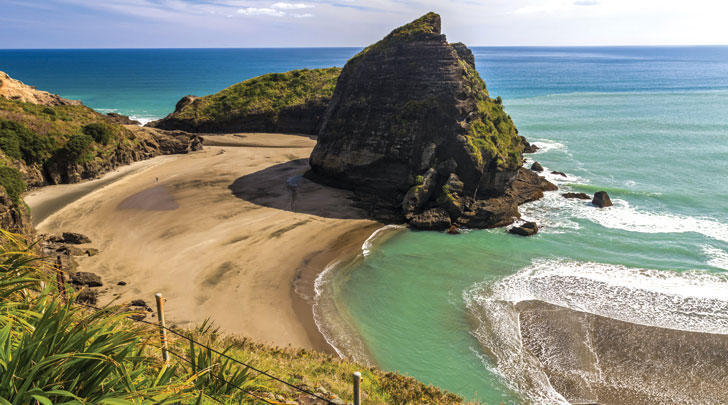
Piha and Karekare
The pollution
At Piha and Karekare beaches (main picture, above), just west of Auckland, the problem is not with the shore but with the lagoons, where the water backs up and bacteria isn’t flushed away by the ocean. Unfortunately, because they’re relatively safe spots on otherwise rugged surf beaches, young children often play in the lagoons, unaware that the water could make them sick.
The solution
Martin Neale of Auckland Council says that the lagoons have high levels of bacteria, but the Council doesn’t yet know for certain what’s causing it. And until it does, it can’t fix it.
“We’ve got a problem and we know we’ve got to deal with it and we’re just trying to get the information that will allow us to deal with it.”
“If you look at the catchment, there’s not a lot of livestock or farming,” Martin says. “There are a few small areas of wildfowl that could be having a contribution. The general assumption is that it is linked to poorly performing septic tanks, but we haven’t got a definitive link.”
Currently the Council is trying an expensive testing technique to pinpoint the problem, called microbial source tracking. This should identify the type of animal – whether four-legged or two – that the bugs are coming from.
Until a solution is found the public can get up-to-date advice on water quality in the lagoons and elsewhere – and sign up for email updates and warnings – by searching ‘safe swim’ at www.aucklandcouncil.govt.nz.
Waihi Beach
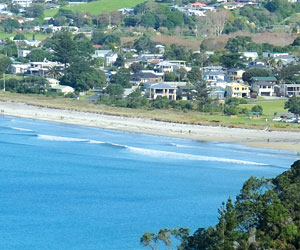
The pollution
Waihi Beach is a 9km strip of sand in the Bay of Plenty considered one of the safest surf beaches in the country. However high levels of cow excrement in streams running on to the beach have made two spots permanently unsafe for swimming.
The points where Two Mile Creek and Three Mile Creek flow across the sand carry permanent health warning signs from the Bay of Plenty District Health Board. The high levels of faecal contamination mean that anybody who comes into contact with the water there is at risk of gastrointestinal illnesses such as salmonella, campylobacter or giardia. People can also experience cold and flu-like symptoms and skin, eye and ear infections.
Because the streams originate in steep land used for dairy farming, then flow slowly across relatively flat land afterwards, disease-causing organisms in the water are not flushed away, and accumulate.
The solution
The Bay of Plenty Regional Council says it is working to remedy the problem with a raft of measures that includes planting and fencing the banks of streams, protecting existing areas of biodiversity, and retiring steep, erodible land from agricultural use.
In spite of the pollution at the two sites, the flushing effect of the ocean means the rest of the beach is safe for swimming.
Raglan
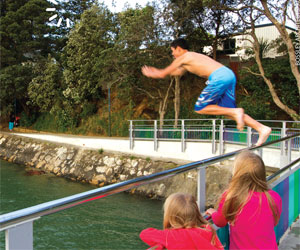
The pollution
Holiday-makers and locals love dive-bombing off the bridge near the central beach in Raglan’s Kopua domain, but according to locals 20 years ago the pollution was so bad nobody wanted to get in the water.
The problem was animal excrement and sediment washing into the harbour, largely as a result of intensive farming upstream.
The solution
“What comes down the streams ends up on the beach,” says Raglan resident Fred Lichtwark. “That’s what it’s all about. If you don’t look after your streams, you get contaminated beaches.”
Several years ago Fred got together a group called Whaingaroa Harbour Care and began building fences and planting trees and shrubs along the streams running into the harbour, reducing and filtering run-off of livestock manure and urine, and reducing the amount of sediment being washed into the water, making the streams and harbour noticeably cleaner.
The team have now planted 1.2 million trees and the place has transformed.
Fred estimates that 60 per cent of the planting project is now complete and says it’s been successful in part because it’s beneficial for the farmers – who pay for the plantings because it helps them prevent stock loss in steep gullies and streams.
The water quality has improved out of sight, Fred says. “Before, you’d see a green scum line in the wave marks. Now it’s just blue clean water and it’s full of fish and healthy. There’s a heap more people using the beach. The town’s that busy, you can’t get a park.”
Island Bay
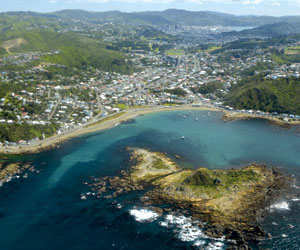
The pollution
Island bay is a popular launching point for Wellington divers and snorkelers, with a dive trail nearby and the wreck of a former navy frigate in the vicinity. There’s also a strong family element at the beach, with a park across the road and a swimming pontoon in the bay during summer.
However, it was also Wellington’s most consistently polluted beach in 2013, according to monitoring carried out by the Greater Wellington Regional Council. At one of the beach’s council-monitored sites, only 12 of 20 routine water samples complied with Council guidelines.
Urban storm water discharges, some with potential sewage contamination, are believed to be a major source of faecal contamination at the beach.
The solution
City beaches are often unsafe for swimming following heavy rain, since it can pick up nasties like bird and dog faeces, litter, sediment and other contaminants, and carry them into streams or drains that are piped to the coast. In part, it’s an issue of how cities are built. The more concrete a city has, the less rainwater is absorbed: instead, the rain is flushed straight out to sea, and sometimes spills over into sewerage systems, forcing human waste into the ocean.
In Island Bay this situation is compounded by old and cracked public sewers, plus some illegal cross connections at private homes where sewerage runs into storm water pipes.
Over the coming months Wellington Water will be upgrading pipes around Island Bay in an effort to solve the problem. In the short-term, the advice for swimmers is to avoid the water after wet weather – and to check the water quality online; 24 river and 61 coastal sites in the region are tested weekly for contamination over summer, with results posted to the web, so if you’re heading to a known problem spot it’s worth checking first at www.gw.govt.nz/is-it-safe-to-swim.
Kaiteriteri
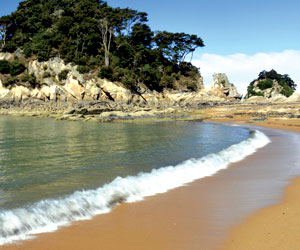
The pollution
Reasonably small floods in the Motueka and Riwaka rivers have caused water quality problems at Tasman’s popular Kaiteriteri Beach.
The Tasman District Council has tracked faecal bacteria that has shown up at Kaiteriteri and found that the main source is excrement run-off from ruminants – cattle or sheep – that ends up in streams and rivers.
“It comes out of the rivers, then a plume develops,” says Trevor James, resource scientist for water quality and aquatic ecology. “The fresh water is less dense than the salt, so it floats on top. The plume gets pushed around by the wind and tide, and can in some circumstances push up the coast to Kaiteriteri and in rarer circumstances, down the coast. Most often, it will just pour straight out to sea.”
The last beach closure at Kaiteriteri was for two days in 2010, when a flood followed a long dry period. The lack of rain had allowed large amounts of animal faecal matter to settle on the ground around the Motueka catchment, and the flood washed it off into the streams and up the coast, leading to high levels of bacteria at the beach.
The solution
Tasman Council is now implementing a system that predicts when pollution at Kaiteriteri is likely to be above guidelines and will provide an early warning to swimmers. It will work by measuring river flows, wind and tide, and send alerts to officials’ cell phones and to the Kaiteriteri Domain Board which runs the campground, who can put up warning signs.
Okahu Bay
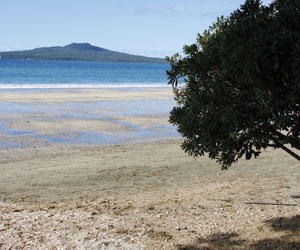
The pollution
A small sandy bay within walking distance of Auckland’s city centre, Okahu Bay has a long history of pollution beginning with the installation of a sewer pipe in 1919. This was followed by the construction of a seawall, marina and hard stand – and compounded by boats mooring in the bay, the 22,000 cars that use Tamaki Drive each day, and the waste and heavy metals that pour into the bay unfiltered through every one of the storm water drains along the waterfront.
Once full of shellfish, the bay now contains only around 300 cockles and 150 pipi.
The solution
Okahu Bay hit the headlines in August when Ngati Whatu o Orakei laid down a bed of mussels as part of its long-term project to repair the damage done to the bay and its water over the last century. Project manager Richelle Kahui-McConnell says it’s anticipated that the mussels will filter sediment and water and increase biodiversity.
Mussels are believed to filter around 350 litres of water a day, and the plan is to lay down a tonne of mussels every month. This ‘mussel reef’ should help remove heavy metals, and is part of a raft of measures including filtering the inflow from storm water drains, addressing overflows into the bay’s catchment, and ‘daylighting’ local streams – taking them out of below-ground culverts and re-planting their margins – which should slow down the flow of water and remove pollution.
See our story Better beaches: 8 ways to make a difference for top tips on helping to keep our beaches pristine.
